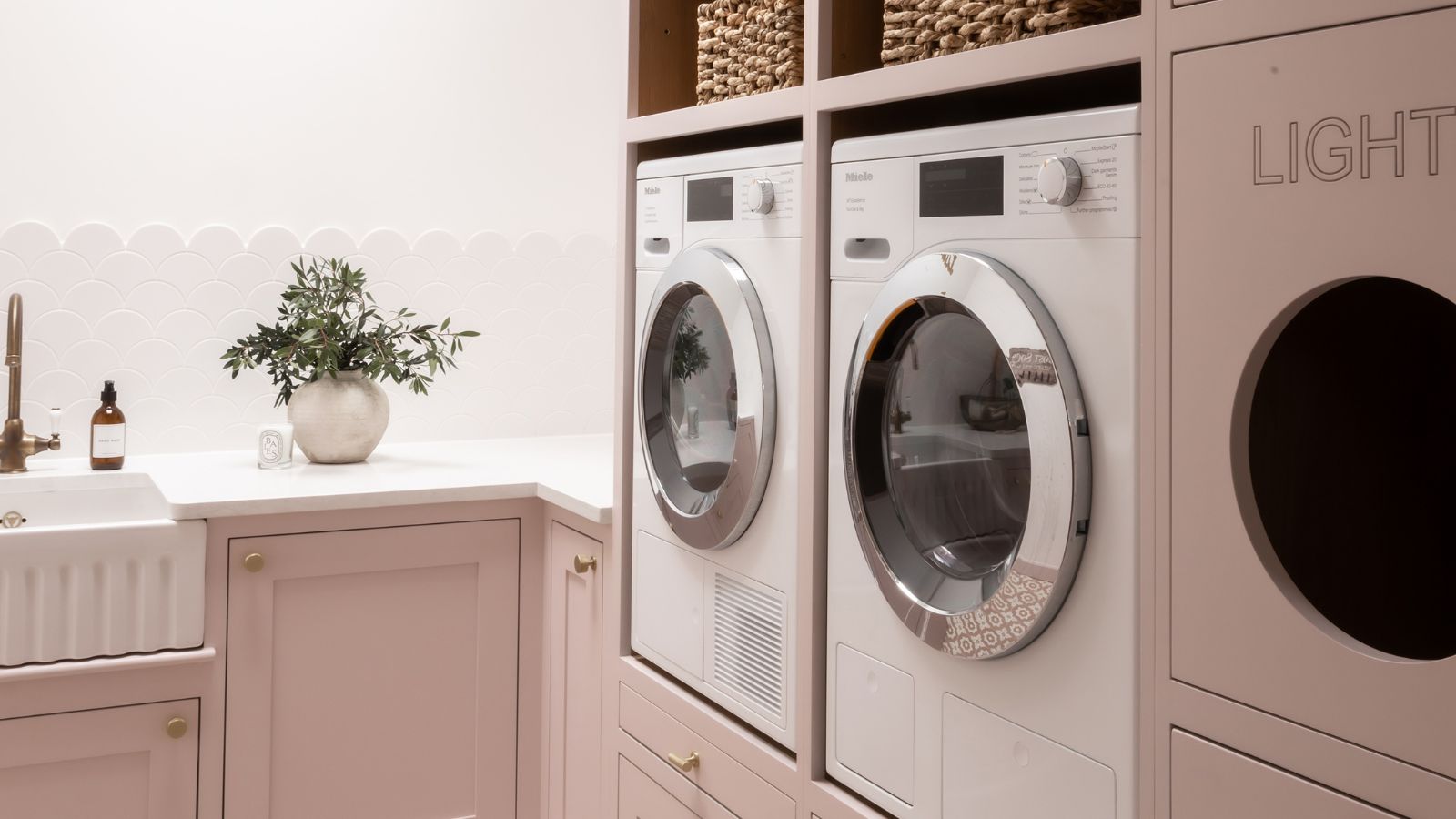
In a fast-paced world we need our appliances to work hard for us, taking the strain out of everyday task, including trusty washers. But when it comes to front-load vs top-load washers, do you know the differences and how to pick the one best suited to your needs?
Both get your laundry clean and offer a range of cycles, but here, our appliance experts compare the main differences, pros, and cons to help you pick well and be happy with your investment.
The best washing machines should be simple to operate, offer a good range of options for all kinds of laundry and lifestyles, easy to clean and reliable so here's what you need to know about these different loading styles.
Front-load vs top-load washers compared
Before stepping out of your home to shop for a new washer, make sure you have narrowed down the options otherwise you risk coming home empty handed having been overwhelmed with all the decisions you will need to make. At the very least, knowing whether you want a top-load or front-load model will help.
Glenn Lewis, President at Mr. Appliance a Neighborly® company says, 'Top-loading washers were the first residential machines to hit the market in the US and as the name implies, you put the clothes in from the top. Front-loading washers you put the clothes in the front.'
Let's take a look at how the two compare and the pros and cons to be aware of so you don't end up making any washing machine mistakes you might later regret.
What are the pros of top-load washers?
Despite being thought of as a little old-fashioned by some people these days, top-load washers still have a lot to offer homeowners.
'Everyone loves top-loaders because it's so easy to load and unload clothes without bending over, making it preferable for elders or those with back issues,' says Ocean Van, owner of Coco Laundry. 'However, it's sometimes hard to reach and unload small items at the bottom of the drum.
'Another bonus is that the required space around the washer is minimal for loading and unloading clothes. Additionally, top-loaders make adding or removing items easier in the middle of the wash cycle because the washer just pauses and doesn't need to drain the water in the drum. Also, bearings and parts are under less stress, potentially leading to a longer lifespan with fewer repairs.
'They generally require less maintenance and are less prone to mold and mildew issues,' continues Ocean, which should please anyone struggling to understand how to sanitize and disinfect a washer and dryer properly.
'But dirt and detergent residue may become trapped at the bottom of the drum because it wasn't pumped out to the drain.'
Affresh Washing Machine Cleaner from Amazon can be used to clean both top-load and front-load washers and even cleans inside the pump.
What are the cons of top-load washers?
As with everything, there are also some downsides to top-load washers. You need to make aware yourself aware of these before making a decision or all your laundry room design idea could be ruined.
'The top-loader doesn't allow the dryer to be stacked above,' points out Ocean Van.
As well as being slightly less suitable for those with small laundry rooms who want the option of adding a dryer to their appliances, top-loaders also run slightly less efficiently than front-load washers.
'Due to the orientation of the drum, the top-load washer will need to fill up the water all the way up past the top of the clothes line,' says Ocean Van. 'Otherwise, the clothes at the top won't get submerged and washed thoroughly. Furthermore, the top-loader drains the dirty water inefficiently because the bottom of the drum is the lowest point, so the washer needs to push the dirty water up and out using a water pump.
'For everyday laundry, top-loaders utilize a twisting motion that is less effective at stain removal compared to the tumbling action of front-loaders. The agitator in the middle of the drum can also cause tangling and stretch clothes.'
If you want to place your washer under your countertops, bear in mind that this won't be possible with a top-loader.
Struggling with stubborn stains? Puracy Stain Remover from Amazon is enzyme-based and removes even oil and red wine.
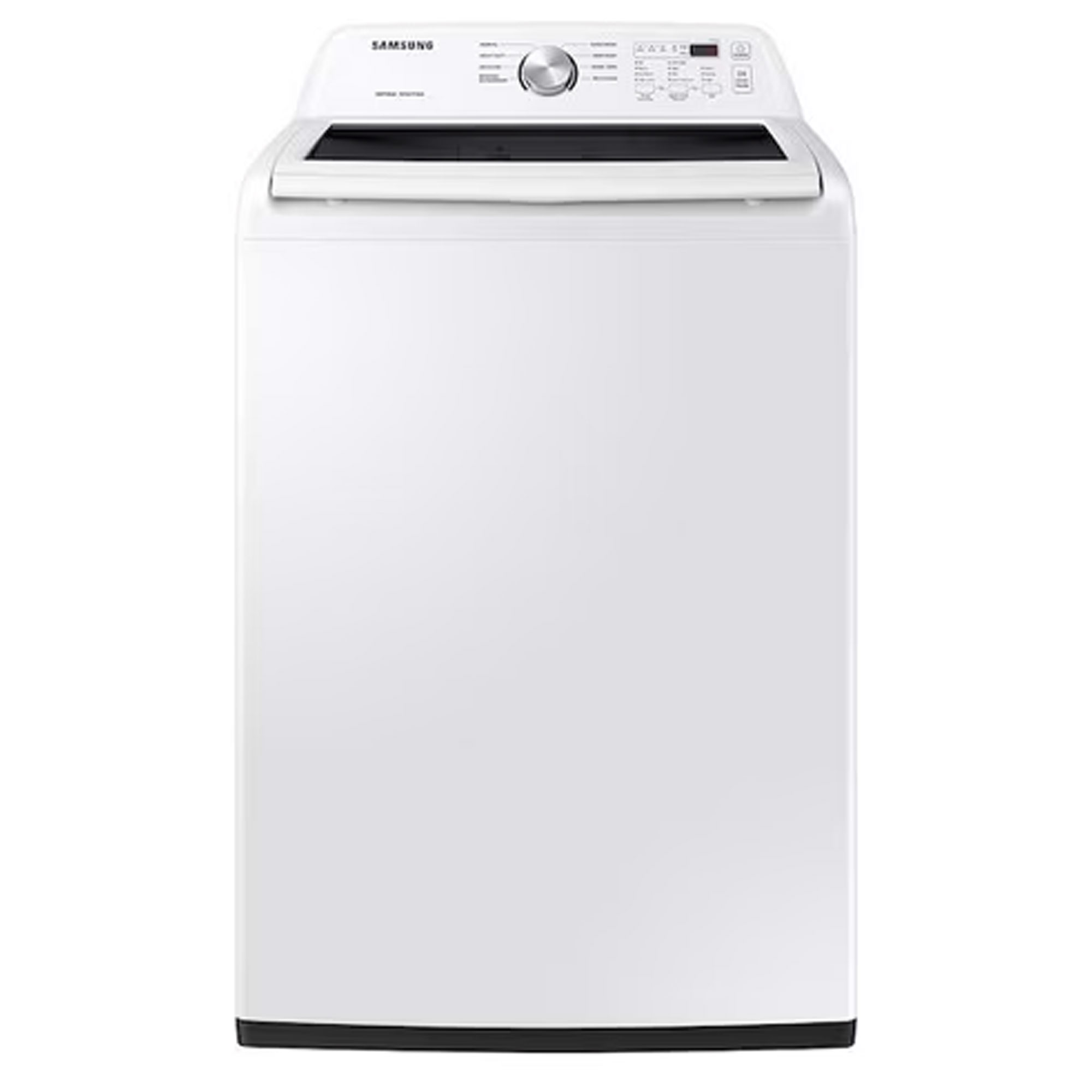
One of the most common complaints regarding top-load washers is that they noisily jump around while spinning clothes, but this offering from Samsung has 'Vibration Reduction Technology' for a much quieter wash. We love the soft-close lid too which adds to the luxury feel. This particular model does have an auto-lock function meaning you'll have to wait until it finishes to add in that forgotten sock.
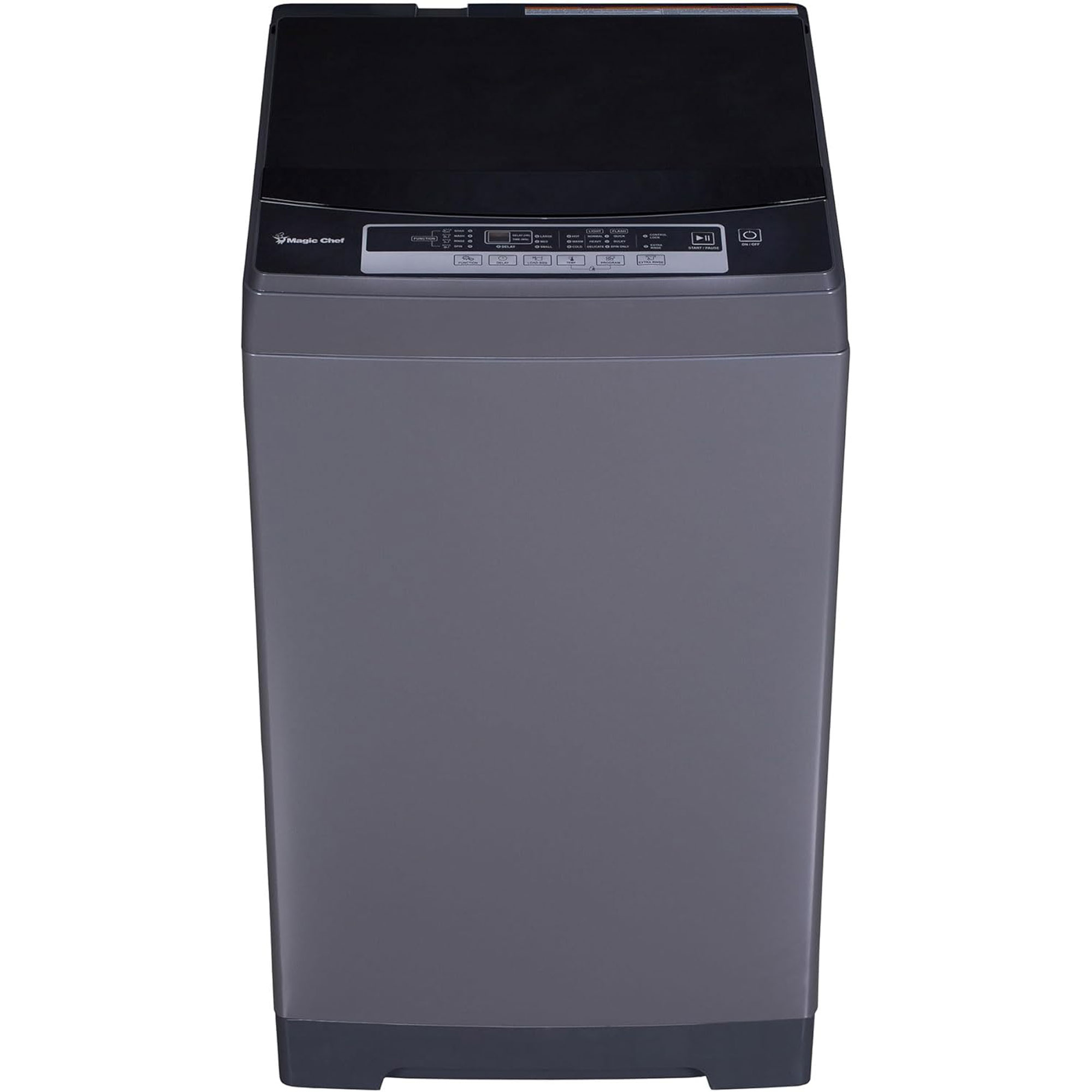
Perfect for those limited on space as it measures just 20.7 x 20.3 x 36.6 inches. Despite its petite size it still has a capacity of 1.7-cu ft and comes with lots of useful features, as well as six cycle options. If you plan on squeezing this washer into your kitchen you will be pleased to learn that it is quiet to run and its sleek and subtle appearance will stylishly slot between cabinets.
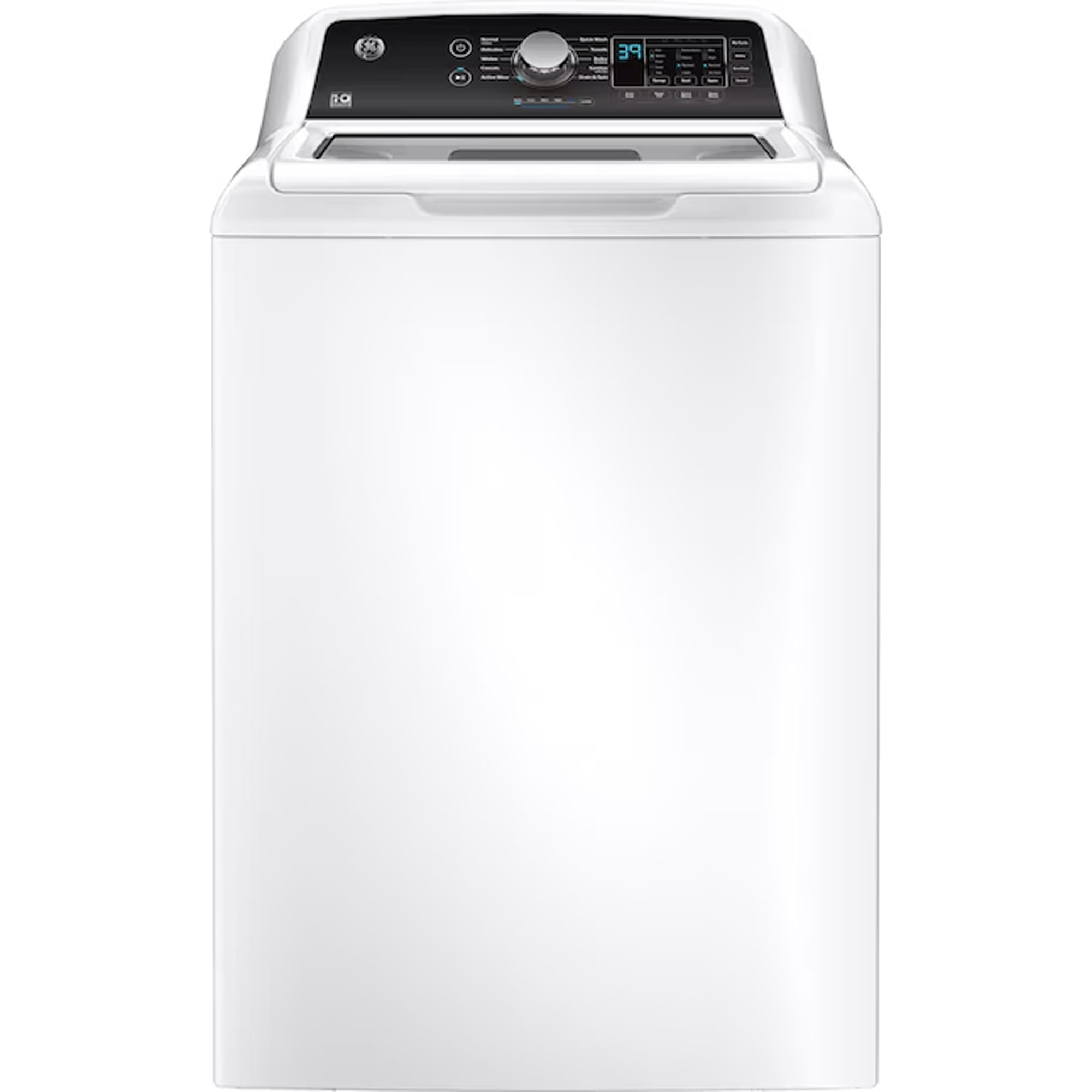
This top-load washer really has so much to offer, including a water level control function that means there is no need to waste water. It also features a handy 'My Cycle' setting that allows you to save your favorite cycles. If you are worried about clothes getting tangled, as was the case with some older top-load models, you'll be pleased to hear the dual action agitator is gentler.
What are the pros of front-load washers?
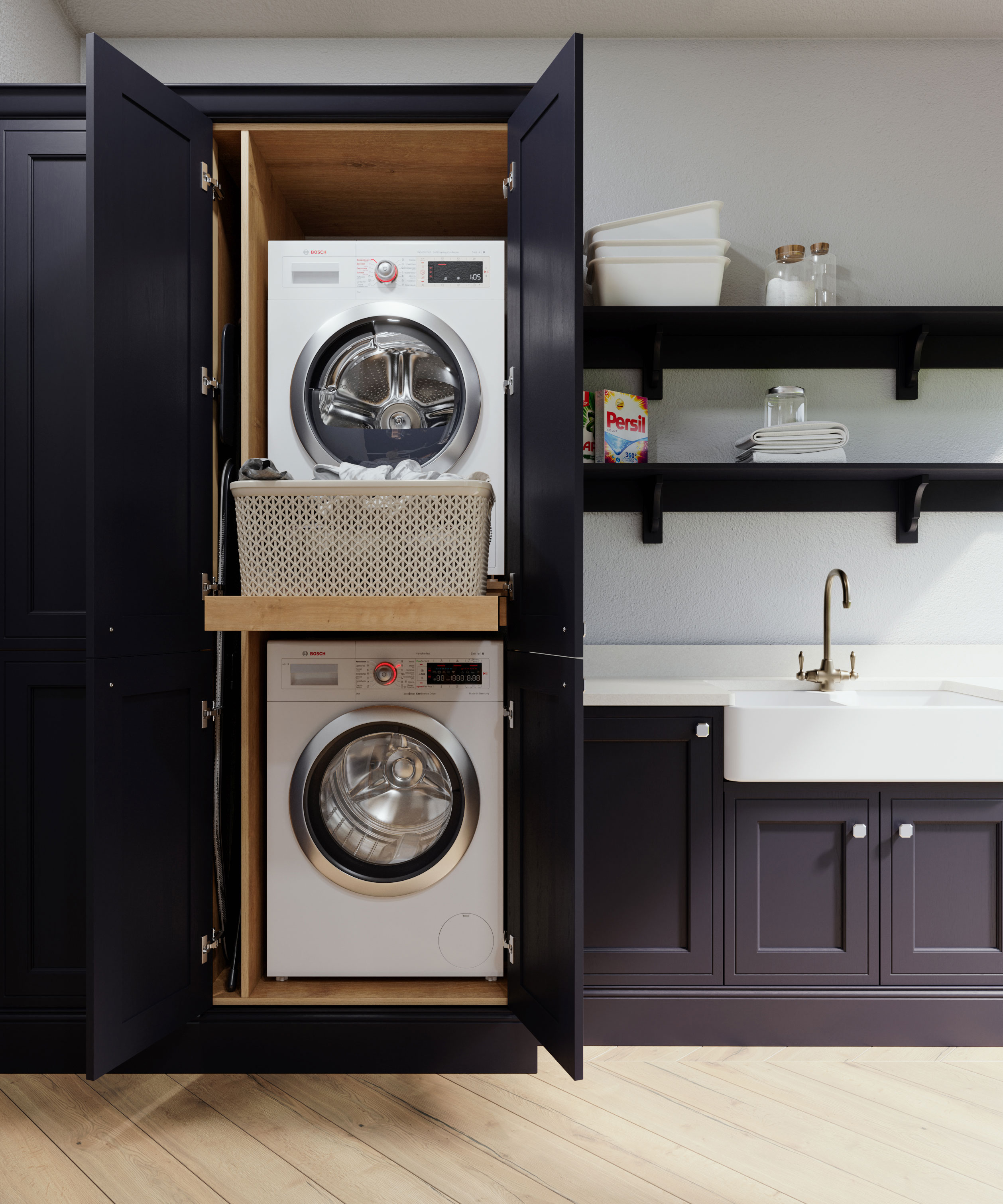
Now to front-load washers, which became popular in the last 20 years, and why you might want to consider one of these as opposed to a top-load model.
They are generally more energy and water efficient, consuming less resources than other types of washing machines, explains Tyler Kungl, head of Business Unit Laundry (North America) at BSH Home Appliances. Tyler adds, 'They also tend to have higher spin speeds and can extract more water from textiles, which helps shorten cycle times in the dryer.'
'Significantly less water is used per cycle with a front-loader because the water only needs to fill up 1/3 to 1/4 of the drum horizontally,' says Ocean Van. 'Due to the movement of the drum, all the clothes will get wet and go through the cleaning action. For draining, the front-loader drum is in the middle of the machine, so it just opens a valve at the bottom of the drum and lets gravity flow the dirty water down the drain.'
These machines use less water and spin at higher speeds so your clothes are dryer when they come out of the washer and take less time to dry in the dryer. Water and energy-use aside, front-loaders can also clean clothes more efficiently than top-load washers according to our experts.
'The tumbling action, combined with gravity, detergents and the drum's features, provides better mechanical scrubbing and improves cleaning effectiveness,' says Ocean, with the tumbling motion comparable to hand washing, bringing less friction and minimizing wear and tear.
There are other benefits too.
'A dryer can be stacked on top of a front-load washing machine, conserving valuable floor space,' says Tyler Kungl.
Not only are they brilliant for anyone looking at how to maximize space in a small laundry room, they can also be a great option if you need to install your washer in your kitchen.
'Front-load machines have a load sensor, counterweights and padding for a quieter wash,' add Tyler Kungl.
If you plan on placing your dryer on top of your washer make sure you use a product such as this Washer Dryer Stacking Kit from Amazon to fix them into place.
What are the cons of front-load washers?
Now to the downsides of what are fast becoming the most popular type of washer.
'Front-loaders require regular cleaning to prevent mold and mildew, especially around the door gasket and detergent compartment,' warns Ocean Van. 'Bearings and other parts can wear out faster because consumers tend to overload these washers.
Loading requires bending or kneeling down, which can be uncomfortable for some, though Ocean adds, 'Pedestals can elevate the machine but only to waist height. Adding clothes mid-cycle is generally more challenging, as the door locks to prevent leaks, and the washer drains all the water to allow the door to open and then refills the water again once the cycle restarts.'
If you're designing a laundry room, you'll also require more clearance and space in front of the washer than you will with a top loader.
'A top-loading washer is cheaper in most cases too,' says Glen Lewis, which is something to bear in mind if you are looking for a quick and cost-effective way to kit out your home.
Getting to the bottom of how to clean a washing machine should help you keep on top of any mold and mildew issues.
RMR-86 Instant Mold and Mildew Stain Remover Spray from Amazon works brilliantly on mold stains on rubber seals. Learn the different ways you can clear washing machine rubber seal mold in our expert guide.
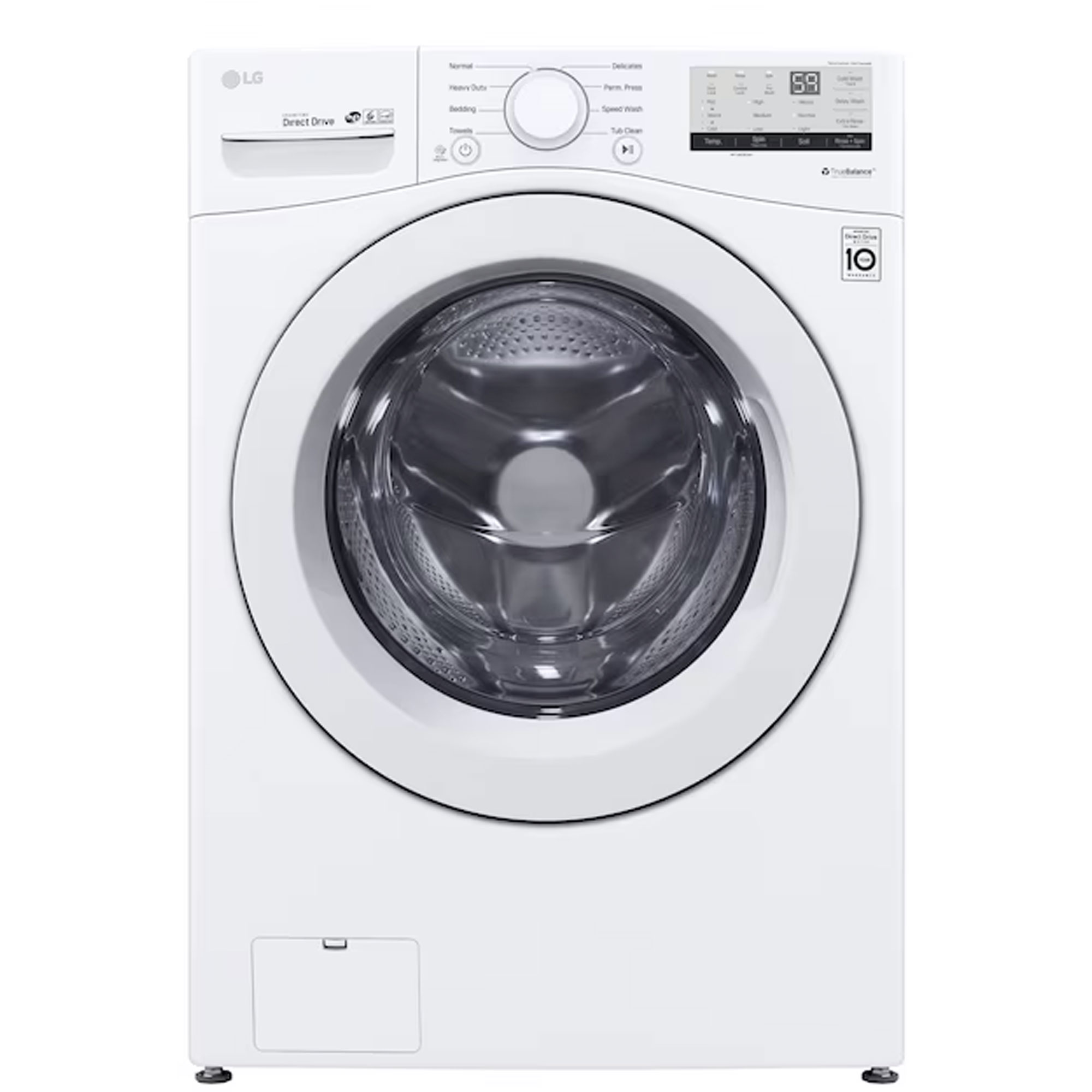
A stand-out feature of this front-load washer is how clean it can get laundry thanks to the six different wash motions it uses throughout the cycle. Despite having an impressive 4.5-cu ft. capacity, it's just 30 inches deep making it easy to fit into even a small laundry room.
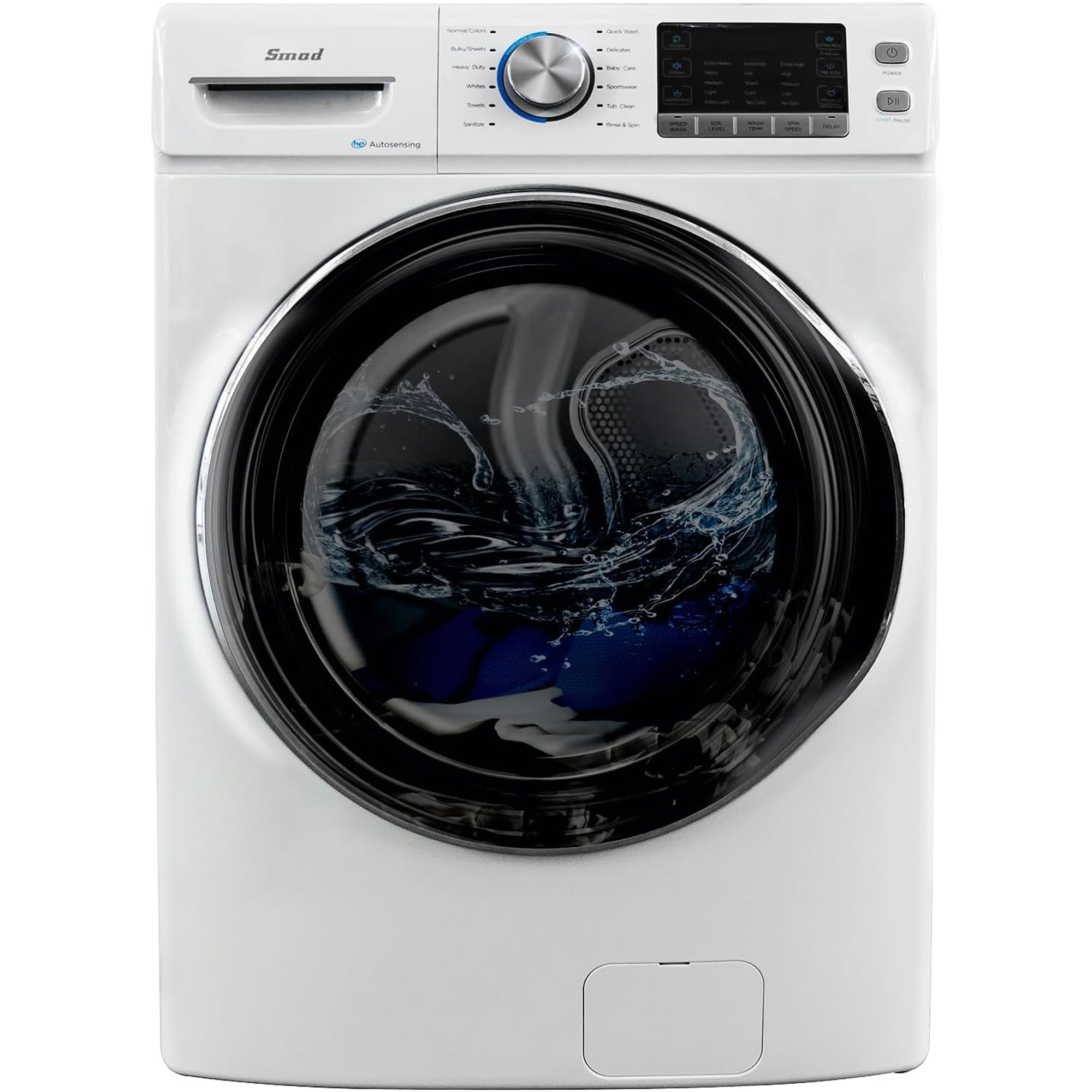
If it is a good range of cycles that you're after then this is the model for you as it allows you to select from 12 different options. What we particularly love about this washer is the 'Tub Clean' setting that is designed to be run regularly to keep the tubs and seals fresh and clean.
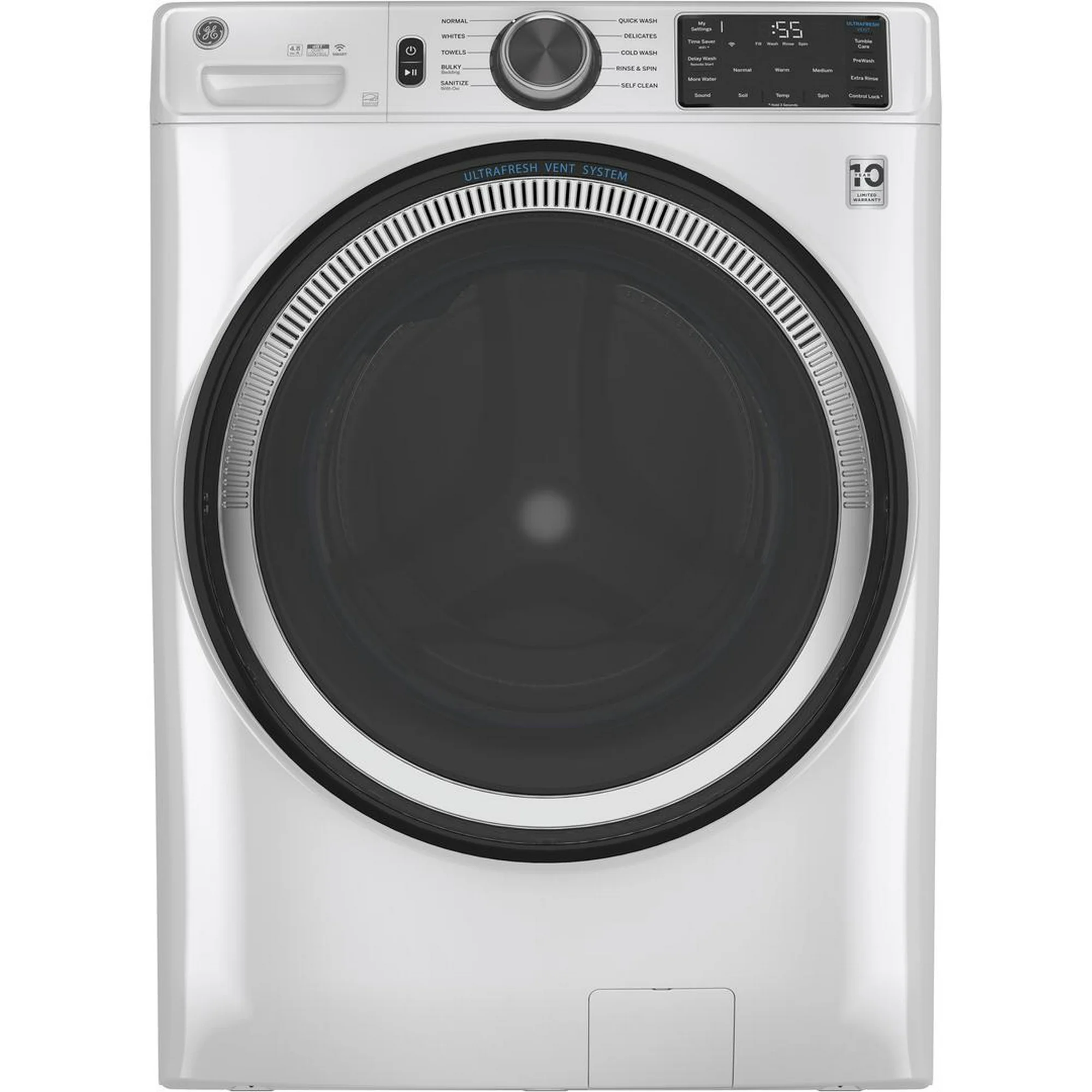
This is a whopper of a washer, with a capacity of 4.8-cu ft. meaning it can handle really large and bulky loads with ease. It also has built-in wi-fi allowing you to operate it from a smart phone even when you're not home. Users report that it is so quiet that you can hardly tell its running.
Is a front-load or top-load washer more expensive?
Now to the all important question – is a front-load washer more expensive than a top-load washer?
In short, yes, they are, but don't let that deter you, because running costs are a different matter, meaning they are perfect if you are wondering how to save money on your laundry.
'Due to advanced technology and design, front-loaders are typically more expensive than top-loaders but are more energy and water-efficient, leading to savings on utility bills,' explains Ocean Van. 'The faster spin cycle also reduces drying time, saving energy in the drying process.'
'A top-loading washer is cheaper in most cases, however there are fewer stackable models if space is an issue for you,' further explains Glenn Lewis. 'While front-loaders can be more expensive, they are easier to use if you have a bad back or certain disabilities. Also, many models can be stacked and take up less room.'
'The typical price range for a quality washing machine is between $500 and $1,500, influenced by factors such as capacity, features, and durability,' advises Glenn Lewis.
FAQs
What features should I look for when buying a washer?
The way you load a washer is just one aspect when it comes to choosing a model that is right for you – there are other factors to consider too.
'Key features to consider when purchasing a washing machine are the ones that would matter to you,' says Glenn Lewis. 'If you have a large family you need one that has a large capacity and is energy efficient. If you are a blue-collar worker, you need a machine with a good heavy-duty cycle. If you are a white-collar worker, one with a good permanent press cycle is important. Think about what your needs are and then purchase the best machine that works for you and is at the price you can afford.
'Consumers have to think about their needs. First you need to know how much room you have for the washer (and dryer) in your laundry area,' advises Glenn Lewis. 'Then think about the type of washing you will be doing. Heavy work clothes or more delicate and permanent-press loads? Then think about how many loads you will be doing a week and if energy efficiency is important to you. Finally, check the reviews and find the best machine that fits your needs that you can afford.'
Make sure you know how to use your machine properly by look at a guide to washing machine settings so that you get the most out of it.
How do I get the most out of my washer?
Once you've chosen your washer, how can you make sure you are using it in the most efficient way?
If you learn how to remove mold from the rubber seal on a washing machine, you will be halfway to ensuring your appliance stays in tiptop condition. You can also use specialized cleaning products such as odor-busting OxiClean Washing Machine Cleaner from Walmart.
'Keep the door of your machine open after use as remaining moisture can create unwanted odors,' says Tyler Kungl. 'Don’t overload and, to maintain your washer, you should clean the drain filter and the door seal once a month.'
Using the Washer Door Prop and Stopper from Amazon makes it easy to keep the washer door open to ensure it stays smelling fresh.
Meet our experts
Once you have decided on a model of washing machine you can turn your thoughts to how you will dry wet laundry. Our guide to the best clothes dryers should help you make a decision.







